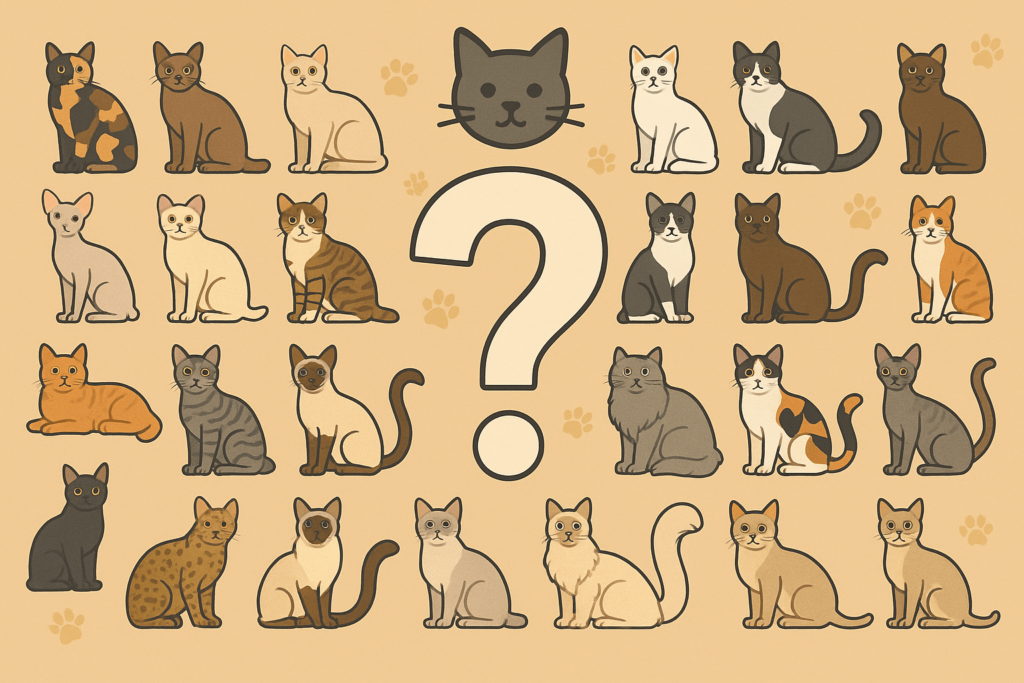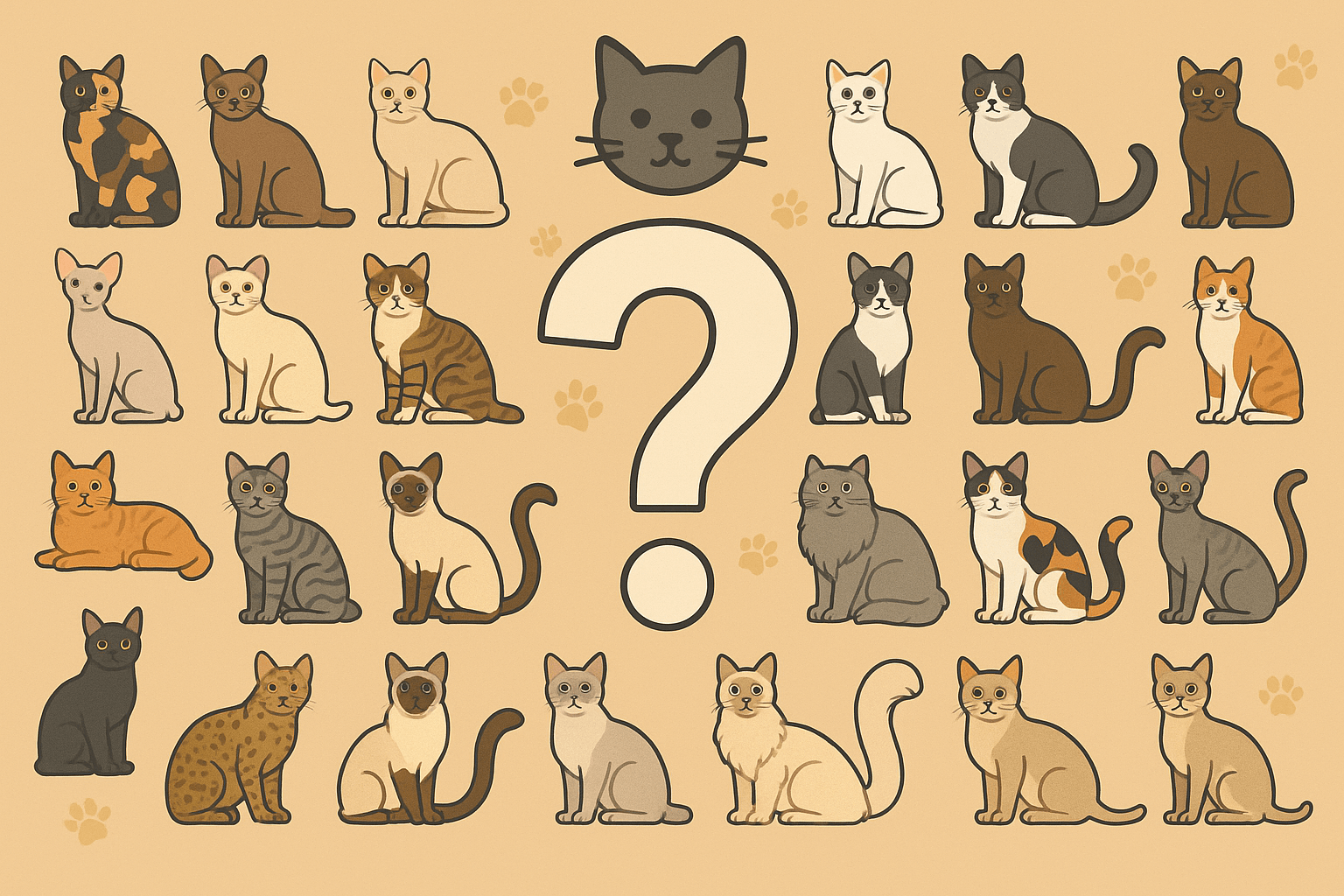How Many Cat Breeds Exist? A Comprehensive Guide
Cats are one of the most beloved pets worldwide, cherished for their unique personalities, striking appearances, and independent nature. But how many cat breeds actually exist? The answer may surprise you, as it varies depending on the organization or registry you consult. While some sources recognize around 70 official cat breeds, others list over 100 distinct varieties. This diversity reflects centuries of natural evolution, selective breeding, and cultural influences. In this guide, we’ll explore the fascinating world of cat breeds, their origins, and what makes each one special. Whether you’re a curious cat lover or considering adopting a feline companion, this blog post will provide valuable insights into the incredible variety of cats.
Recognized Cat Breeds Around the World
The number of recognized cat breeds depends on the standards set by various cat registries and organizations. These groups classify breeds based on specific criteria, such as physical traits, temperament, and lineage. Here’s an overview of how different registries categorize cat breeds.
The International Cat Association (TICA):
TICA recognizes 73 standardized breeds, including popular ones like the Maine Coon and exotic breeds like the Bengal.Cat Fanciers’ Association (CFA):
The CFA acknowledges 45 championship breeds, focusing on those with well-documented pedigrees and widespread popularity.Fédération Internationale Féline (FIFe):
FIFe lists 50 breeds, emphasizing European and Asian varieties while excluding some newer experimental breeds.World Cat Federation (WCF):
With over 60 breeds, the WCF includes rare and hybrid breeds, making it one of the most inclusive registries.Non-Standardized Breeds:
Some cats don’t meet registry standards but are still considered unique breeds by enthusiasts, such as the Lykoi or Toyger.
These variations highlight the complexity of breed classification and the ongoing efforts to document the diverse feline population.

Popular Cat Breeds and Their Unique Traits
While there are many cat breeds, some have gained widespread recognition due to their distinctive characteristics and appeal. Here’s a closer look at a few popular breeds and what sets them apart.
Maine Coon:
Known as the “gentle giant,” the Maine Coon is one of the largest domesticated cat breeds, prized for its friendly demeanor and tufted ears.Siamese:
Famous for its striking blue eyes and sleek coat, the Siamese is vocal, intelligent, and highly social, often forming strong bonds with its owners.Persian:
With its long, luxurious fur and flat face, the Persian is synonymous with elegance and calmness, making it a favorite among cat lovers.Bengal:
The Bengal’s wild appearance, resembling a miniature leopard, is matched by its playful and energetic personality.Scottish Fold:
Characterized by its folded ears and round face, the Scottish Fold is known for its sweet temperament and affectionate nature.
Each breed offers something unique, catering to different preferences and lifestyles, which explains their enduring popularity.
Check this guide 👉Energetic Cat Breeds: Best 7 Expert Tips!
Check this guide 👉Hypoallergenic Cat Breeds: Best 7 Expert Tips!
Check this guide 👉Most Friendly Cat Breeds: Best 7 Expert Tips!
Cat Breed Characteristics | Best Suited For |
|---|---|
Long-haired coats (e.g., Persian) | Owners who enjoy grooming and cuddling |
Short-haired coats (e.g., Siamese) | Low-maintenance grooming needs |
Highly vocal (e.g., Siamese) | Interactive households seeking engagement |
Playful and energetic (e.g., Bengal) | Active families or individuals |
Affectionate and calm (e.g., Ragdoll) | Homes desiring a lap cat |
Factors That Influence Breed Recognition
Not all cats are officially recognized as breeds, and several factors determine whether a feline variety earns that status. Understanding these criteria sheds light on the complexities of breed classification.
Pedigree Documentation:
Breeds must have verifiable lineage records tracing back several generations to prove consistency in traits.Physical Standards:
Specific physical attributes, such as coat color, pattern, and body structure, play a significant role in breed recognition.Temperament Consistency:
Registries consider whether a breed exhibits predictable behavioral traits, ensuring reliability for potential owners.Global Popularity:
Widely distributed breeds with established followings are more likely to gain recognition compared to regional or rare varieties.Genetic Health Testing:
Breeds must meet health standards, minimizing risks of hereditary conditions to ensure the well-being of future generations.
These rigorous requirements explain why certain breeds remain unrecognized despite their uniqueness.
Rare and Experimental Cat Breeds
Beyond the well-known breeds lie rare and experimental varieties that capture the imagination of cat enthusiasts. These breeds showcase the creativity and innovation behind feline genetics.
Sphynx:
The Sphynx’s hairless appearance makes it stand out, though it requires extra care to protect its sensitive skin.Lykoi (Wolf Cat):
Resembling a werewolf, the Lykoi has a patchy coat and mysterious allure, appealing to those who love unconventional looks.Savannah Cat:
A cross between a domestic cat and a serval, the Savannah is large, athletic, and known for its adventurous spirit.Toyger:
Bred to resemble a tiger, the Toyger boasts bold stripes and a muscular build, captivating fans of wild aesthetics.Khao Manee:
Originating from Thailand, the Khao Manee is a rare gem with striking odd-colored eyes and a shimmering white coat.
These rare breeds remind us of the endless possibilities in feline diversity and the passion driving breeders to create new wonders.
Factors Influencing Breed Popularity
Certain cat breeds rise to prominence due to a combination of factors that appeal to human preferences and lifestyles. These elements shape why some breeds become household names while others remain obscure.
Media Exposure:
Breeds featured in movies, books, or viral videos often gain widespread popularity, such as the internet-famous Grumpy Cat (a Snowshoe mix).Ease of Care:
Breeds requiring minimal grooming or maintenance tend to attract busy owners looking for low-maintenance pets.Hypoallergenic Qualities:
Cats like the Siberian and Balinese produce fewer allergens, making them appealing to allergy sufferers.Unique Appearances:
Unusual features, such as the curled ears of the American Curl, draw attention and admiration from cat enthusiasts.Cultural Significance:
Breeds tied to historical or cultural traditions, like the Japanese Bobtail, often hold special meaning and recognition.
These influences explain why certain breeds capture public imagination more than others.
Mixed-Breed Cats vs. Purebred Cats
While purebred cats dominate discussions about breeds, mixed-breed cats make up the majority of feline companions worldwide. Comparing the two reveals important distinctions worth considering.
Genetic Diversity:
Mixed-breed cats benefit from a broader gene pool, reducing the risk of inherited health issues common in purebreds.Predictability vs. Mystery:
Purebreds offer predictable traits, while mixed-breeds bring surprises in terms of appearance and behavior.Availability and Cost:
Mixed-breed cats are typically easier to adopt and less expensive than purebreds, which may require breeder fees.Adaptability:
Mixed-breeds often exhibit hardier temperaments, adapting well to diverse environments and lifestyles.Shelter Adoption Rates:
Many mixed-breed cats await loving homes in shelters, providing an opportunity to save a life while gaining a loyal companion.
Both options have merit, and the choice ultimately depends on personal preference and circumstances.
How Climate Affects Cat Breeds
Climate plays a significant role in shaping cat breeds, influencing physical adaptations and survival strategies. Understanding these connections adds depth to our appreciation of feline diversity.
Cold Climates:
Breeds like the Norwegian Forest Cat and Siberian boast thick double coats to withstand freezing temperatures.Hot Climates:
Hairless breeds like the Sphynx thrive in warm environments, as they lack fur that could trap heat.Desert Origins:
The Abyssinian’s sleek coat reflects sunlight, aiding survival in arid regions where cooling is essential.Humid Regions:
Breeds originating in humid areas, such as the Tonkinese, have shorter, water-resistant coats to cope with moisture.Urban Adaptations:
Smaller breeds like the Singapura adapt well to city living, thriving in compact spaces with limited outdoor access.
These examples demonstrate how geography and climate influence the development of unique feline traits.
Frequently Asked Questions About Cat Breeds
How many cat breeds are officially recognized?
The number varies by organization, ranging from 45 to over 70, depending on the registry’s standards.
What is the rarest cat breed?
Breeds like the Sokoke and Peterbald are considered extremely rare due to limited populations and specialized breeding programs.
Can mixed-breed cats be registered?
Most registries focus on purebred cats, but some organizations celebrate mixed-breed cats through household pet categories.
Are some breeds better for first-time owners?
Yes, breeds like the Ragdoll and British Shorthair are known for their easygoing temperaments, making them ideal for beginners.
Do all breeds require the same level of care?
No, care needs vary by breed—long-haired cats need regular grooming, while active breeds require ample playtime and stimulation.
Celebrating the Diversity of Cat Breeds
The world of cat breeds is vast and endlessly fascinating, offering something for every type of cat lover. From the majestic Maine Coon to the quirky Sphynx, each breed brings its own charm and challenges. Understanding the nuances of breed recognition and appreciation allows us to celebrate the rich tapestry of feline companionship. Whether you’re drawn to a specific breed or simply adore cats in general, one thing is clear: these remarkable animals enrich our lives in countless ways.
Canned Pumpkin for Cat Diarrhea: Best 7 Expert Tips! Natural remedy to firm stools, soothe upset bellies, and support gut health safely.
Can a Cat Give You Scabies? Best 7 Expert Tips! Discover the truth about feline mites, human skin risks, and how to protect yourself—without panic.
Cat Flea vs Human Flea: Best 7 Expert Tips! Discover the truth about bites, species, and how to eliminate infestations for good.
Weird Cat Behaviors: Best 7 Expert Tips! Discover why cats do strange things—and how to understand, not punish, their instincts for a happier home.





